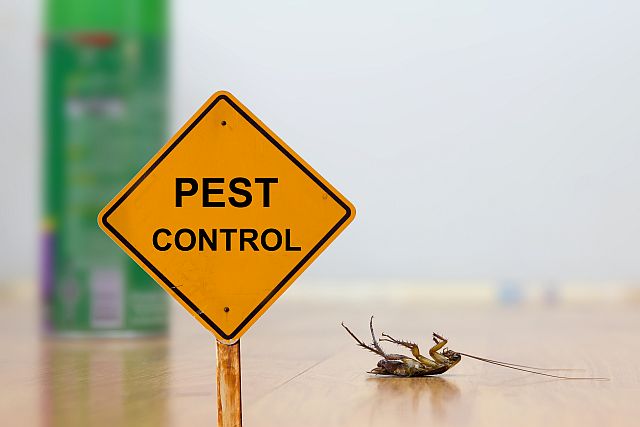The pesky questions of rental property pest control… is it a landlord or tenant responsibility?
If you’re a landlord, you probably think pest control in your rental property is your responsibility. If you’re a tenant, you probably also think it’s the landlord’s responsibility! However, it turns out that, in Queensland at least, the truth about pest control responsibility in a rental property lies somewhere in between.
In other words – it depends… on things like time lines and clauses in the tenancy agreement.
Tenant’s Right To a Habitable Dwelling
The law (being the Residential Tenancies Act) says that a tenant has a right to a habitable, pest-free dwelling. It also says that you, as the landlord, must provide that.
But, as the landlord, you also have the right to expect your tenants to look after your property. This includes not creating or allowing conditions to develop that are conducive to encouraging pests to take up residence there.
It also includes notifying you, or your property manager immediately, of pest problems as and when they occur.
Seems straightforward enough doesn’t it? Nevertheless, there are still grey areas but generally speaking, the following will usually apply.
Pest Control Responsibilities – Pre-existing Pest Issue
If you rent out your property and it turns out there was a pest infestation at the time of rental, or conditions were ripe for a pest problem to happen, then you are responsible for pest control. That’s because it was a pre-existing problem and your tenant rightly has the right to expect you to do something about rectifying the problem.
Pest Control Responsibilities – No Pre-existing Pest Issue
If you rent out the property completely 100% free of pests and an infestation occurs subsequently as a result of something the tenant has done, the professional pest control can reasonably be expected to be your tenant’s responsibility. That’s because the occupants allowed a condition to develop that resulted in a pest infestation.
Example – common pests move in
For example – you had pest control services in to have the property fumigated and subsequently certified clear of cockroaches, fleas, silverfish, ants, and any other crawling/flying/scurrying/slithering pests you could think of. This happened just before the tenant moved into it.
Unfortunately, though, your tenant has pets, which you don’t mind in the slightest because you’re a pet person yourself. However, it turns out that your tenant neglected to treat the pet, or pets, for fleas. They also allowed them to sleep on the furniture etc. The tenant is now complaining there is a flea infestation.
In this instance, it is their problem because you (of course) have a certificate or receipt from the pest control company who did the fumigating that says the property was a flea-free zone when the tenant moved in.
Pest Control Responsibilities – Grey Pest Control Areas
But the example above can also be a grey area. You may for example have a certificate declaring the property free of fleas, cockroaches, rodents etc. And it probably was when the tenant moved in.
Plot twist – possible maintenance issues
However – it turns out conditions in the property are roach-friendly. Therefore, Dee Dee, Marky, Joey (from Oggy And The Cockroaches) and their mates were all happy to climb right back in (through the cracks and crevices you didn’t seal off) as soon as the vapours had dissipated and it was safe to do so.
Now – IF your client has done nothing to encourage Dee Dee et al to return and the condition of the property alone allowed them to do so, the pest control is your responsibility. But – IF the tenant has left food and water out for them, it becomes grey because:
· On the one hand, the roaches are getting in through the unsealed cracks and crevices,
· On the other hand, the tenant created ideal cockroach-friendly conditions.
You would probably need to get a ruling from the Residential Tenancies Authority (RTA) unless you have something in your rental agreement with the tenant.
Of course, if the tenant neglected to tell you as soon as they noticed the return of the roaches, and let the situation fester, it could then become their responsibility. Be sure your tenants know how to contact you or their Property Managers in case of emergencies or situations in which they need assistance.
Determining Responsibility – Is It In Writing?
If you, as landlord, took a leaf out of the Queensland Government’s Public Community Housing book, and specified in the rental agreement that:
· The property was fumigated before the tenant moved in, and
· All pest control issues arising after they take up occupancy are their responsibility
you might not be responsible even in grey cases.
Property One Property Managers – The Number One Choice For Responsible Landlords
If you’re not sure whether removing pests and pest control are landlord or tenant responsibilities in a rental property, we can help clarify the situation for you.
With over 20 years in the rental property management business, we can also offer our advice and expertise in drawing up rental agreements that set out clearly who is responsible for what when it comes to pest control in your rental property.
Contact us today for more efficient property management, and take advantage of our many years of experience in Brisbane, and Queensland, property management.

